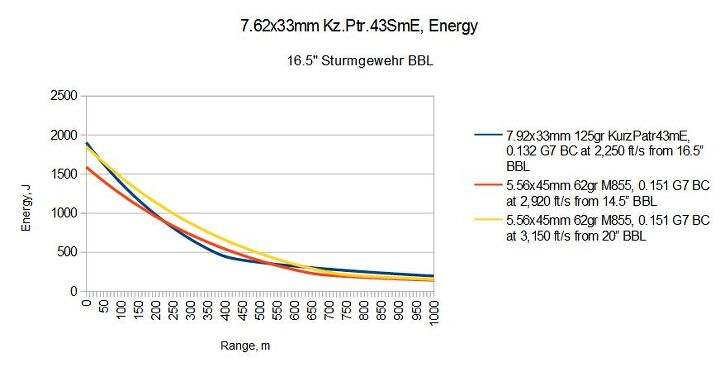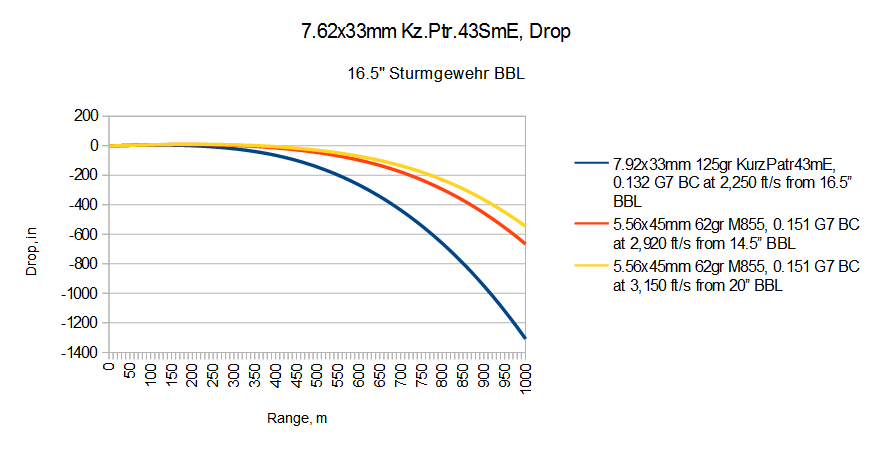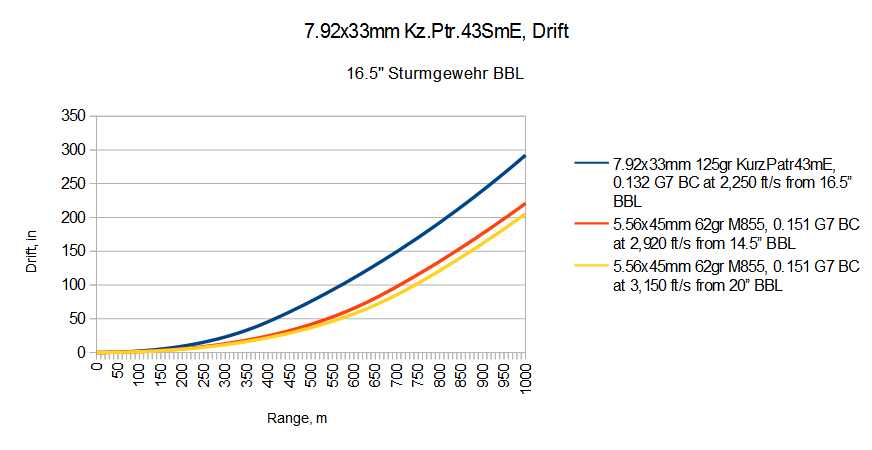Many would consider this next round to be the first intermediate cartridge ever, and while that isn’t really true, it is one of the most influential rounds of all time, and perhaps the most influential intermediate round ever developed. I am talking of course about the Nazi-era Kurzpatrone 43 Spitzgeschoß mit Eisenkern, or as it is more commonly called, the 7.92×33 Kurz. This round became the model – in one fashion or another – for numerous intermediate rounds developed all around the globe after World War II, including the promising .280 British, and ubiquitous 7.62x39mm Soviet, as well as several others we’ll discuss in later installments.
At the time, the 7.92×33 round’s biggest rival was the less-powerful US .30 Carbine caliber, to which it is compared in this previous article; therefore, I will not retread that ground. Instead, let’s take a look at how this first generation intermediate compares to our current-generation NATO baseline round, the 5.56mm M855:
Just by looking at the raw figures, intermediate rounds seem to have gotten a lot better! Yet, not only does the 5.56mm handily outperform the old German 7.92×33 Kurz in ballistics, it’s substantially lighter, too. Compared to 12 grams per shot for M855, the Kurz clocks in at 16.7 grams per shot for wartime steel cased ammunition, or 17.6 grams for current-production Serbian manufactured brass cased.
The point of this comparison isn’t to bash the Kurz, of course, as it’s a far earlier and less optimized round than what is available today. Instead, I wanted to take the opportunity to illustrate just how far this concept has come since 1942!
Note: All ballistic calculations are done with JBM’s Trajectory calculator, using the ballistic coefficient appropriate to the projectile being modeled. Also, keep in mind that there is no single true velocity for a given round; velocity can vary due to a large number of factors, including ambient temperature and chamber dimensions. Instead, I try to use nominal velocity figures that are representative of the capability of the round in question. Finally, in this case I used the standard sight height for an AR-15; the sight height of an actual StG-44 is not substantially different, and this gives a more direct ballistic comparison.
Postscript: Since I’ve decided to expand this series to calibers that – while they may still be ballistically relevant to the wider conversation about intermediate calibers – are no longer actually being produced or tested, I have decided to re-name some of the posts in this series to “Historical Intermediate Calibers”. However, I will retain the same numerical sequence and the word “Modern” struck through. Enjoy!
 Your Privacy Choices
Your Privacy Choices




